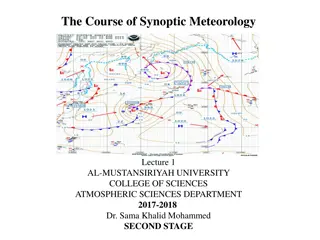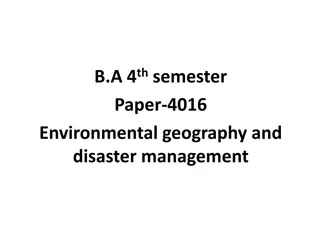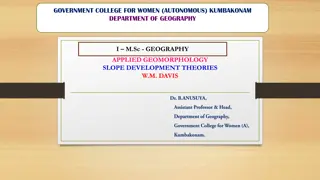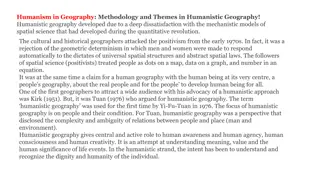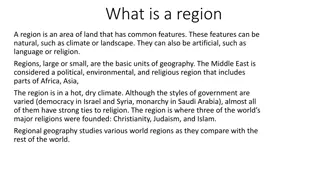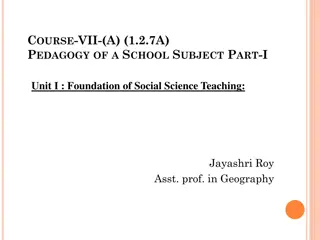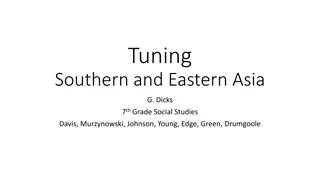Understanding Jet Streams in Geography: A Comprehensive Overview
Jet streams are strong, high-altitude air currents that flow in a narrow belt in the upper troposphere, influencing weather patterns and aviation. Discovered during World War II, jet streams have distinct properties, types, and an index cycle that affects atmospheric circulation globally.
Download Presentation

Please find below an Image/Link to download the presentation.
The content on the website is provided AS IS for your information and personal use only. It may not be sold, licensed, or shared on other websites without obtaining consent from the author. Download presentation by click this link. If you encounter any issues during the download, it is possible that the publisher has removed the file from their server.
E N D
Presentation Transcript
BY: LECT. ASHU SHARMA DEPTT. OF GEOGRAPHY G.D.C RAJOURI
INTRODUCTION Strong rapidly moving circumpolar westerly air circulation in a narrow belt of few hundred kms width in upper limit of troposphere. Their circulation is confined between poles and 20 degree latitude in both the hemisphere at the height at 7.5-14km. According to Trewartha, the Jet stream are relatively narrow bands of stronger winds
DISCOVERY Jet stream was discovered during second world war when American jet fighter planes flying toward Japan (east to west)found obstruction of an air circulation which was moving in opposite direction (west to east) resulting into marked reduction in the velocity ,while they return to their bases their velocity increases (west to east), thus this strong meandering upper air circulation is known as JET STREAM.
PROPERTIES Circulation from west to east. Jet stream measures thousand of kms in length, a few hundred kms in width and a few kms depth. Their circulation is between poles and 20 degree latitude in both the hemisphere. Also known as circumpolar whirl because these moves around the poles in both the hemispheres. Their path is wavy and meandering. Vertical wind shear is 18-36 km/h and lateral wind shear is 18 km/h. Maximum velocity of jet stream is 480km/h and minimum wind velocity is 108km/h.
TYPES Polar front jet stream: formed above convergence zone (40-60 latitude) of surface polar cold air mass and tropical warm air mass. Subtropical westerly jet stream: formed to the north of subtropical surface high pressure belt (30-35 degree latitude). Tropical easterly jet stream: formed above surface easterly trade winds over India and Africa during summer season. Polar night jet stream: also known as stratospheric sub polar jet stream develop around poles at height of 30 km. Local jet stream: formed locally due to local thermal and dynamic conditions.
INDEX CYCLE The period of transformation of straight path of jet stream to wavy or meandering path is called index cycle which is completed in four successive stages: First stage: the position of jet stream is near the poles and is separated by polar cold air mass in the north and warm westerlies in the south. the circulation of jet stream is almost in straight path from west to east. Second stage: the straight path of jet stream is transferred into wavy path . The process initiates the beginning of development of Rossby waves.
Third stage: this stage is characterized by fully developed meandering course of jet stream with the result they are positioned near the equator (20 degree latitude) Fourth stage: It is characterized by cutting of meanders of jet streams from main path resulting into their circulation in independent circular pattern (cyclonic in south and anticyclonic in north)
SIGNIFICANCE Help meterologists to forecast weather based on their poistion. Helps in the intensification of S-W Monsoon over Indian Subcontinent. Important for air travel.






